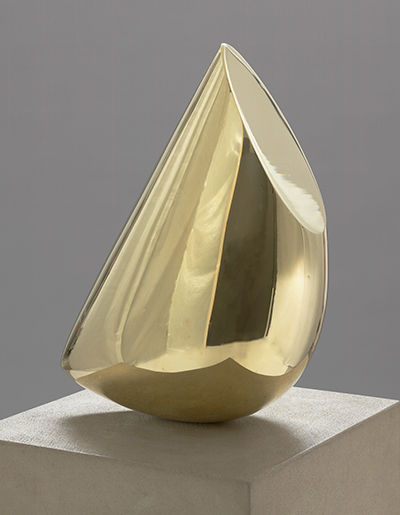Constantin Brancusi is famously known for creating several variants of a given subject. However, this was not the case for the Young Bird creation because there are only two other variants in existence. There is the larger marble that he created in 1929 and the one he created in 1925 that was based on this bronze Young Bird.
The Young Bird sculpture pristinely sits on an original pedestal that Brancusi designed. The pedestal comprises an abstract wooden base that is cylindrical in shape and a limestone cube. A close look and you will be able to discover that there is a lot of repetition on the sculpture. Brancusi utilised a lot of repetitive elements to bring out the impressive design of the sculpture. This technique is a resemblance to his other work called the Endless Column. Unlike the style of his western predecessors, Brancusi mostly used his techniques that were far from academic tradition. That is why the Young Bird sculpture is radically reductive and not in any way representational of modernism sculptural techniques.
This sculpture is not one that you would refer to as angelic but seems a bit less impressive at first because the chops used were not technical. However, this doesn't mean that Brancusi did not put in his skills in this piece, but a masterful portrayal of the anatomy of the bird as because of his brief apprenticeship under Auguste Rodin. You will realise that this sculpture, like many others, was both artistic and deliberate choice because he had no reliance on creating casts. He made use of his tools and hands to curve out the repetitive shapes on the Young Bird. That is why all his works are unique despite the fact that they may be bearing the same motif or name.
When observed against the light, you can be able to see the intricate surface qualities on the sculpture. This brings out the effectiveness of his deliberate and articulate striations as he aimed at using surfaces as expressive forms while communicating intangible ideas. Brancusi believed that the concept of sculptures being real had a lot to do with more than just looking like nature and this premise was clear in his works. His radical ideas on sculptures were instrumental in influencing the evolution of sculpture and how artists viewed sculptures. That is why artists like Richard Serra, Donald Judd, Isamu Noguchi, and Robert Morris embraced his style and it is noticeable in the creations. Some major names that influenced Brancusi's techniques include Auguste Rodin, Paul Gauguin, Marcel Duchamp and Fernand Leger.




